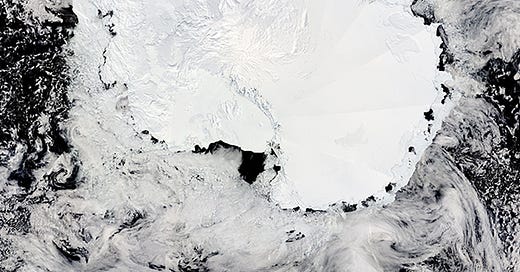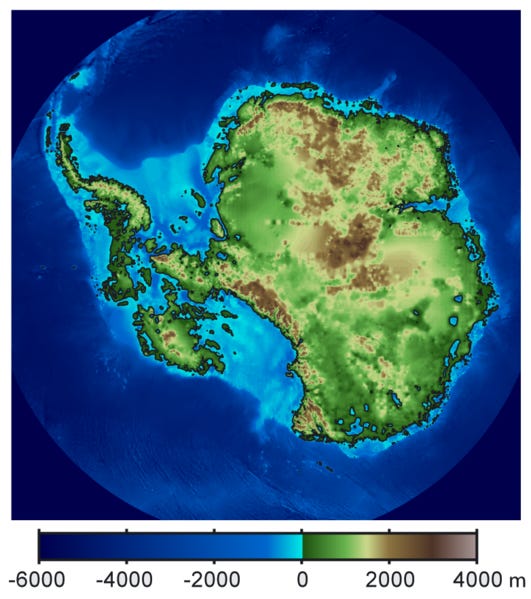The Ice Sheet of Antarctica: Could it Buffer Global Warming?
Desperately looking for a way out
Antarctica as seen by the MODIS/Aqua, from NASA. There is a lot of ice, there. Could the effect of its gradual melting mitigate global warming?
If you studied phase transitions in a chemistry class, you know that there are rigid rules that link the number of phases of a system and its “degrees of freedom.” It is called the “phase rule,” and it was derived by none less than the great chemist Joshua Willard Gibbs.
It says that if you have a single-phase system, say, liquid water in a closed container, you can warm or cool it as you please. But if the system contains more than one phase, for instance ice and water, then the system will tend to maintain a specific temperature, at least at constant pressure. You may try to warm it, but it will react by melting some of the ice, maintaining its temperature stable until there is solid ice in it. It is the principle of the “Whiskey on the Rocks”, which should remain at 0 °C as long as there is ice in the glass.
Now, the Earth may be seen as a huge glass with some ice at the bottom. It is the continent of Antarctica, which contains most of the ice of the whole planet; about ten times the mass of the only other ice sheet on Earth, Greenland.
The Earth is not a glass of whiskey, but, surely, melting ice absorbs heat, and there is a lot of it. How would it affect Earth’s climate and temperatures? Not an easy thing to determine, and even Joshua Gibbs would probably get a headache out of it. The Earth system is a complex system, and a highly complex system — nothing like a glass of whiskey. You start perturbing it on a specific point, and it hits you back in ways that you would never have imagined.
It is a subject that started being taken into consideration only recently, from no more than a decade or so. The most recent entry in the list is a paper by Xu et al. published in May 2025 on Geophysical Research Letters. They take into consideration the flow of cold water into the Southern Oceans that results from ice melting and examine the effects on the atmosphere.
Plenty of strange things occur as a result: tropospheric cooling, stratospheric warming, effects on the jet streams, and the ocean currents. The final results seem to be somewhat more optimistic than earlier studies. Let me report their conclusion:
Despite being an idealized scenario, the simulations presented here yield unique evidence of what must be considered robust patterns of climate change in response to enhanced Antarctic ice sheet mass loss. Since most of these responses act opposingly to global warming mechanisms diagnosed from model experiments lacking Antarctic freshwater, our results support the notion of a potential delay of anthropogenic climate change through the Southern Ocean processes.
Are we saved? Unlikely, to say the least. At best, we have discovered a new mechanism that opposes global warming, but we don’t know how strong it is, not even if it is significant in the overall system balance.
Yet, the human mind is always looking for easy ways out, so the results of this paper have been interpreted as meaning that there is nothing to worry about for a few centuries, at least. Or that, since these results are uncertain, then everything in climate science is uncertain, and hence there is nothing to be worried about. It seems that we are still in the “denial” phase, the first of the Five Stages of Grief described by Elizabeth Kubler-Ross. And so, we can go back to bombing each other; what could go wrong?
At worst, in a few thousand years, the survivors (if any) could go live in a deglaciated Antarctica, shown here as completely deglaciated, taking into account the isostatic rebound and the sea level rise (by Robert A. Rhode). Antarctica was like that some 15 million years ago. Who knows?








To find out what promoted the lies about climate to begin with is difficult